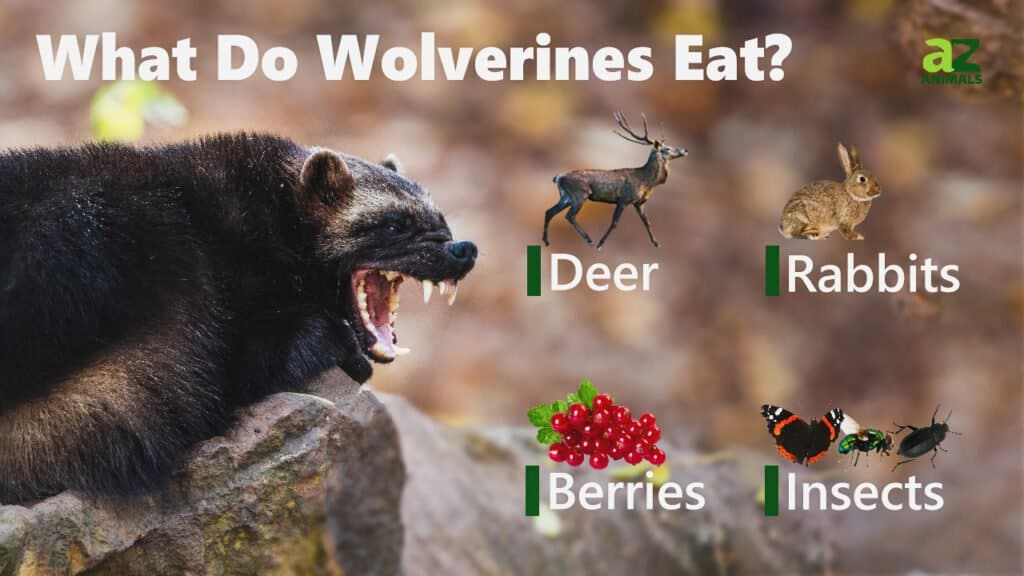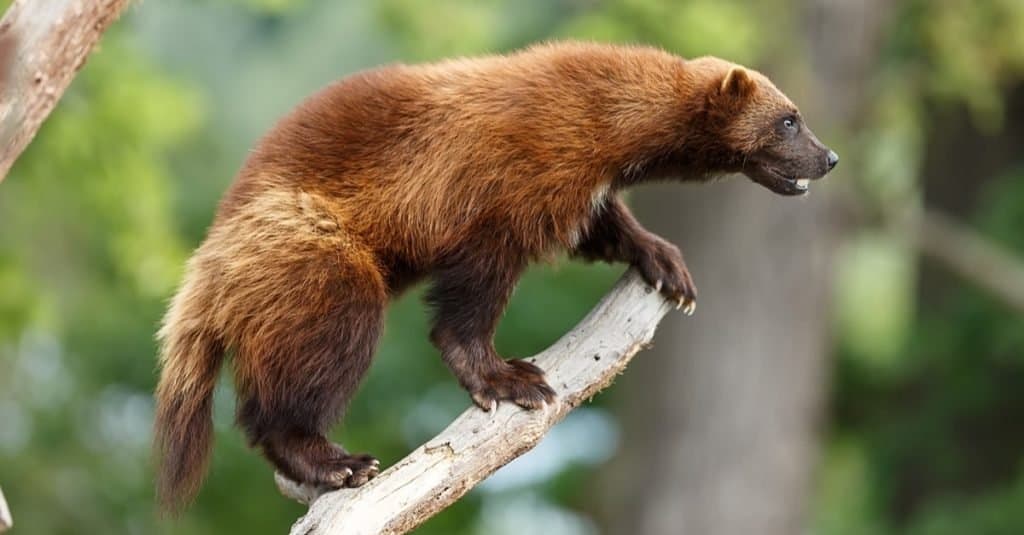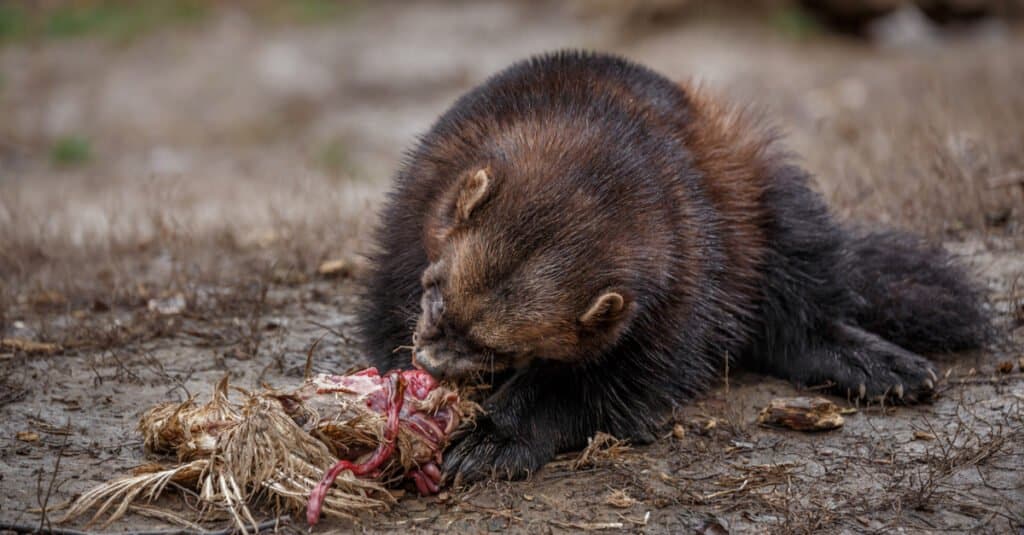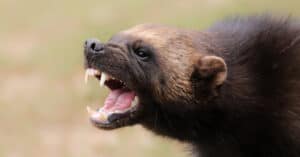
Wolverines are mammals that live in colder regions. They look somewhat like a small bear with dark brown fur, long claws and black-brown head. The wolverine is larger than a raccoon and can grow to be 20-66 lbs. They are a versatile animal, adapting to a wide range of habitats and have a varied diet. We all know that skunks are smelly, but did you know wolverines are known to be smelly as well? Their anal glands produce a liquid that they spray on trees to mark their area and to keep other wolverines away. Does that mean prey can smell them from a mile away and are able to avoid being dinner? Let’s find out how the wolverine hunts and what they eat!
How do wolverines hunt?

A wolverine in a tree
©Michal Ninger/Shutterstock.com
What might smell worse than a smelly wolverine? A dead caribou that has been basking in the sun for three days! A dead caribou is certainly not going to be bothered by the smell of a wolverine. Wolverines often feed on dead animals and scavenge for the carcasses of deer, caribou and elk. When they hunt they like to hunt on their own, at night and look for smaller animals like rabbits or small rodents. In some areas they will attack sheep or small bears. If I had the choice I would choose a fight with a sheep over a bear any day!
What do wolverines eat?

A wolverine eating carrion
©Josef_Svoboda/Shutterstock.com
Wolverines eat a diet that consists of carrion, voles, gophers, rabbits, and will also feed on rodents.
They have an incredible sense of smell and forage around looking for food. Wolverines can smell and locate carrion form long distances and in the winter can smell through layers of snow to locate burrowing rodents like voles, gophers and rabbits. In the summer months they can locate these rodents and dig them out of the ground with their long claws. Wolverines also use their claws to pull apart tree stumps to find insects and grubs. Although primarily carnivores they do eat berries and roots as well.
A complete list of what wolverines eat:
- Carrion
- Deer
- Caribou
- Elk
- Rabbits
- Voles
- Gophers
- Fox
- Beaver
- Insects
- Grubs
- Berries
- Roots
Are wolverine diets the same all year around?

Wolverines are great climbers and they are often seen resting in the evergreen trees of their forest homes.
©Lubos Chlubny/Shutterstock.com
One study in Scandinavia tracked the eating habits of 41 wolverines in four locations. They were trying to observe whether they scavenged more or hunted live prey more and whether it changed during the winter snow-covered months. The results showed that wolverines are flexible and adapt to the most available food sources. In the summer there was an abundance of young reindeers, so they hunted more. In the winter there was more carrion so that became their main food source.
Do wolverines store food for later?
Yes, especially in the winter months. If they are able to take down a large kill, they will bury the remaining meat in the snow to keep it fresh, kind of like a wolverine fridge! In the warmer months they may stash extra food in a tree stump and come back later for another meal.
What eats wolverines?

Wolves will attack wolverines if given the opportunity
©Alexander Sviridov/Shutterstock.com
Wolverines are known as tough animals that you probably don’t want to mess with. But there are a few animals that can attack and kill wolverines. Wolves, mountain lions and bears are the predators of wolverines. So are humans. People hunt wolverines for their fur, using it for parkas and winter coats. Currently, wolverines are not threatened or endangered so it is legal to hunt them.
The photo featured at the top of this post is © Josef_Svoboda/Shutterstock.com
Thank you for reading! Have some feedback for us? Contact the AZ Animals editorial team.





